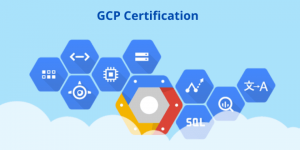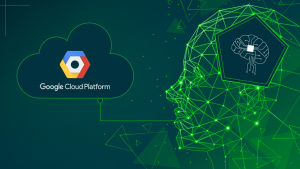tl;dr:
Google Cloud’s Pub/Sub and Dataflow are powerful tools for modernizing data pipelines, enabling businesses to handle data ingestion, processing, and analysis at scale. By leveraging these services, organizations can unlock real-time insights, fuel machine learning, and make data-driven decisions across various industries.
Key points:
- Pub/Sub is a fully-managed messaging and event ingestion service that acts as a central hub for data, ensuring fast and reliable delivery, while automatically scaling to handle any volume of data.
- Dataflow is a fully-managed data processing service that enables complex data pipeline creation for both batch and streaming data, optimizing execution and integrating seamlessly with other Google Cloud services.
- Pub/Sub and Dataflow can be applied to various use cases across industries, such as real-time retail analytics, fraud detection in finance, and more, helping businesses harness the value of their data.
- Modernizing data pipelines with Pub/Sub and Dataflow requires careful planning and alignment with business objectives, but can ultimately propel organizations forward by enabling data-driven decision-making.
Key terms and vocabulary:
- Data pipeline: A series of steps that data goes through from ingestion to processing, storage, and analysis, enabling the flow of data from source to destination.
- Real-time analytics: The ability to process and analyze data as it is generated, providing immediate insights and enabling quick decision-making.
- Machine learning: A subset of artificial intelligence that involves training algorithms to learn patterns and make predictions or decisions based on data inputs.
- Data architecture: The design of how data is collected, stored, processed, and analyzed within an organization, encompassing the tools, technologies, and processes used to manage data.
- Batch processing: The processing of large volumes of data in a single batch, typically performed on historical or accumulated data.
- Streaming data: Data that is continuously generated and processed in real-time, often from sources such as IoT devices, social media, or clickstreams.
Hey there! You know what’s crucial for businesses today? Modernizing their data pipelines. And when it comes to that, Google Cloud has some serious heavy-hitters in its lineup. I’m talking about Pub/Sub and Dataflow. These tools are game-changers for making data useful and accessible, no matter what industry you’re in. So, buckle up, because we’re about to break down how these products can revolutionize the way you handle data.
First up, let’s talk about Pub/Sub. It’s Google Cloud’s fully-managed messaging and event ingestion service, and it’s a beast. Imagine you’ve got data pouring in from all sorts of sources – IoT devices, apps, social media, you name it. Pub/Sub acts as the central hub, making sure that data gets where it needs to go, fast and reliably. It’s like having a superhighway for your data, and it can handle massive volumes without breaking a sweat.
But here’s the kicker – Pub/Sub is insanely scalable. You could be dealing with a trickle of data or a tidal wave, and Pub/Sub will adapt to your needs automatically. No need to stress about managing infrastructure, Pub/Sub has your back. Plus, it keeps your data safe and sound until it’s processed, so you don’t have to worry about losing anything along the way.
Now, let’s move on to Dataflow. This is where the magic happens. Dataflow is Google Cloud’s fully-managed data processing service, and it’s a powerhouse. Whether you need to transform, enrich, or analyze your data in real-time or in batch mode, Dataflow is up for the challenge. It’s got a slick programming model and APIs that make building complex data pipelines a breeze.
What’s really cool about Dataflow is that it can handle both batch and streaming data like a pro. Got a huge historical dataset that needs processing? No problem. Got a constant stream of real-time data? Dataflow’s got you covered. It optimizes pipeline execution on its own, spreading the workload across multiple workers to make sure you’re getting the most bang for your buck.
But wait, there’s more! Dataflow plays nice with other Google Cloud services, so you can create end-to-end data pipelines that span across the entire ecosystem. Ingest data with Pub/Sub, process it with Dataflow, store the results in BigQuery or Cloud Storage – it’s a match made in data heaven.
So, how can Pub/Sub and Dataflow make a real impact on your business? Let’s look at a couple of use cases. Say you’re in retail – you can use Pub/Sub to collect real-time data from sales, inventory, and customer touchpoints. Then, Dataflow can swoop in and work its magic, crunching the numbers to give you up-to-the-minute insights on sales performance, stock levels, and customer sentiment. Armed with that knowledge, you can make informed decisions and optimize your business on the fly.
Or maybe you’re in finance, and you need to keep fraudsters at bay. Pub/Sub and Dataflow have your back. You can use Pub/Sub to ingest transaction data in real-time, then let Dataflow loose with some machine learning models to spot any suspicious activity. If something looks fishy, you can take immediate action to shut it down and keep your customers’ money safe.
But honestly, the possibilities are endless. Healthcare, manufacturing, telecom – you name it, Pub/Sub and Dataflow can help you unlock the value of your data. By modernizing your data pipelines with these tools, you’ll be able to harness real-time analytics, fuel machine learning, and make data-driven decisions that propel your business forward.
Now, I know what you might be thinking – “This sounds great, but where do I start?” Don’t worry, I’ve got you. The first step is to take a hard look at your current data setup and pinpoint the areas where Pub/Sub and Dataflow can make the biggest impact. Team up with your data gurus and business leaders to nail down your goals and map out a data architecture that aligns with your objectives. Trust me, with the right plan and execution, Pub/Sub and Dataflow will take your data game to the next level.
At the end of the day, data is only valuable if you can actually use it. It needs to be accessible, timely, and actionable. That’s where Google Cloud’s Pub/Sub and Dataflow come in – they’ll streamline your data pipelines, enable real-time processing, and give you the insights you need to make a real difference. So, what are you waiting for? It’s time to take your data to new heights and unlock its full potential with Pub/Sub and Dataflow.
Additional Reading:
- Building streaming pipelines with Pub/Sub
- Pub/Sub and Dataflow integration features
- Streaming with Pub/Sub
- Pub/Sub exactly-once delivery
- Pub/Sub message ordering




